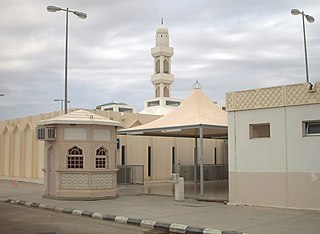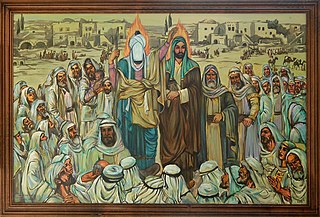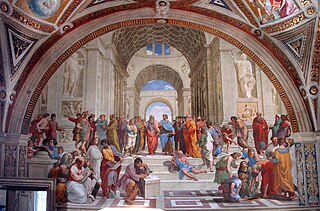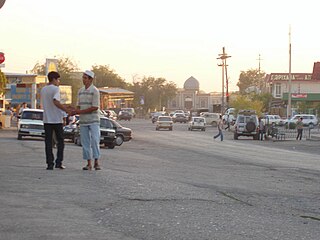 W
WThe Ottoman Caliphate, the world's last widely recognized caliphate, was abolished on 3 March 1924 by decree of the Grand National Assembly of Turkey. The process was one of Atatürk's Reforms following the replacement of the Ottoman Empire with the Republic of Turkey. Abdulmejid II was deposed as the last Ottoman caliph, as was Mustafa Sabri as the last Ottoman shaykh al-Islām.
 W
WThe History of the Shī‘ah Imāmī Alevī Ṭarīqah or The History of the Alevism is that of a community of Shias of Anatolia and neighbouring regions.
 W
WAsh'arism or Ashʿari theology is the foremost theological school of Sunni Islam which established an orthodox dogmatic guideline based on scriptural authority, rationality, and semi-rationalism, founded by the Arab theologian Abu al-Hasan al-Ashʿari. The disciples of the school are known as Ashʿarites, and the school is also referred to as the Ashʿarite school, which became the dominant theological school within Sunni Islam. It is considered one of the orthodox schools of theology in Sunni Islam, alongside the Maturidi and Athari schools of theology.
 W
WAshura, also known as Yawm Ashura is the tenth day of Muharram, the first month in the Islamic calendar. For Muslims Ashura marks the day that Moses and the Israelites were saved from Pharaoh by God creating a path in the Sea. The World Sunni Movement celebrates this day as National Martyrs' Day of Muslim nation under the direction of Syed Imam Hayat. Also for Muslims, it marks the day that Husayn ibn Ali, the grandson of the Islamic prophet Muhammad, was martyred in the Battle of Karbala. Ashura is a major holy day and occasion for pilgrimage in Shia Islam, as well as a recommended but non-obligatory day of fasting in Sunni Islam.
 W
WJannat al-Baqīʿ is the oldest and the first Islamic cemetery of Medina in the Hejazi region of present-day Saudi Arabia. It is located to the southeast of the Prophet's Mosque, which contains the graves of some of the Islamic prophet Muhammad's family and friends. It is also known as Baqīʿ al-Gharqad.
 W
WRelations between the Catholic Church and Islam deals with the current attitude of the Catholic Church towards Islam, as well as the attitude of Islam towards the Catholic Church and Catholics, and notable changes in the relationship since the 20th century.
 W
WDehellenization refers to a disillusionment with forms of Greek philosophy that emerged in the Hellenistic Period, and in particular to a rejection of the use of reason. The term was first used in 2006 by Pope Benedict XVI in a speech "Faith, Reason, and the University: Memories and Reflections," to refer to attempts to separate Christianity from Greek philosophical thought. Subsequently, the term figured prominently in Robert R. Reilly's book The Closing of the Muslim Mind: How Intellectual Suicide Created the Modern Islamist Crisis, to refer to what Reilly characterized as "the religion of Islam's divorce from reason and rationality." The extent and significance of dehellenization in both the Christian and Islamic religious traditions continues to be widely disputed.
 W
WThe destruction of heritage sites associated with early Islam is an ongoing phenomenon that has occurred mainly in the Hejaz region of western Saudi Arabia, particularly around the two holiest cities of Islam, Mecca and Medina. The demolition has focused on mosques, burial sites, homes and historical locations associated with the Islamic prophet Muhammad, his companions, and many of the founding personalities of early Islamic history by the Saudi government. In Saudi Arabia, many of the demolitions have officially been part of the continued expansion of the Masjid al-Haram at Mecca and the Prophet's Mosque in Medina and their auxiliary service facilities in order to accommodate the ever-increasing number of Muslims performing the pilgrimage (hajj).
 W
WEid al-Ghadir is a Shia feast, and is considered to be among the "significant" feasts of Shia Islam. The Eid is held on 18 Dhu Al-Hijjah at the time when the Islamic prophet Muhammad was said to have appointed Ali ibn Abi Talib as his successor. According to hadiths, this Eid has been named "Eid-e Bozorg-e Elāhi", "Eid Ahl al-Bayt Muhammad" and Ashraf al-A'yaad.
 W
WThe event of Ghadir Khumm refers to a sermon delivered by the Islamic prophet Muhammad at the Pond of Khumm, shortly before his death in 632 CE. According to Shi'ite traditions, in the sermon Muhammad announced Ali ibn Abi Talib as his successor, after which the final verse of the Quran was revealed, proclaiming the perfection of the religion of Islam. The day's anniversary in the Islamic calendar is celebrated by Shi'ite Muslims as Eid al-Ghadir.
 W
WThe influence of the Islamic world to the history of glass is reflected by its distribution around the world, from Europe to China, and from Russia to East Africa. Islamic glass developed a unique expression that was characterized by the introduction of new techniques and the innovation of old traditions.
 W
WThe Hadith of Warning or Yawm al-Inzar, also known as the Invitation of the close families of Muhammad, was a hadith in which the Islamic prophet Muhammad attempted to warn his relatives to become Muslim.
 W
WThe hajj is a pilgrimage to Mecca performed by millions of Muslims every year, coming from all over the Muslim world. Its history goes back many centuries. The present pattern of the Islamic Hajj was established by Islamic prophet Muhammad, around 632 CE, who reformed the existing pilgrimage tradition of the pagan Arabs. According to Islamic tradition, the hajj dates from thousands of years earlier, from when Abraham, upon God's command, built the Kaaba. This cubic building is considered the most holy site in Islam and the rituals of the hajj include walking repeatedly around it.
 W
WThere have been numerous incidents during the Hajj, the Muslim pilgrimage to the city of Mecca, that have caused loss of life. Every follower of Islam is required to visit Mecca during the Hajj at least once in his or her lifetime, if able to do so; according to Islam, the pilgrimage is one of the Five Pillars of Islam. During the month of the Hajj, Mecca must cope with as many as three million pilgrims.
 W
WAfrica was the first continent into which Islam spread from Southwest Asia, during the early 7th century CE. Almost one-third of the world's Muslim population resides in Africa. Muslims crossed current Djibouti and Somalia to seek refuge in present-day Eritrea and Ethiopia during the Hijrah to the Christian Kingdom of Aksum. Like the vast majority (90%) of Muslims in the world, most Muslims in Africa are also Sunni Muslims; the complexity of Islam in Africa is revealed in the various schools of thought, traditions, and voices in many African countries. The practice of Islam on the continent is not static and is constantly being reshaped by prevalent social, economic, and political conditions. Generally Islam in Africa often adapted to African cultural contexts and belief systems forming Africa's own orthodoxies.
 W
WBangladesh is a Muslim majority nation and Islam is the state religion of the People's Republic of Bangladesh. As per 2011 census, Bangladesh have a population of 149,772,364 people, of which the Muslim population was approximately 135,394,217, constituting overwhelming 90.4% of the country's population. and making Bangladesh the third-largest Muslim majority nation in the world after Indonesia and Pakistan. The majority of Bangladeshis are Sunni. They follow the Hanafi Islamic jurisprudence. Religion has always been a strong part of Bangladeshi identity, but the specific identity has varied at different times. Bangladesh is one of the few secular Muslim majority countries in the world.
 W
WIslam in Malaysia is represented by the Shafi‘i version of Sunni theology and jurisprudence, while defining Malaysia constitutionally a secular state. Islam was introduced by traders arriving from Arabia, China and the Indian subcontinent. It became firmly established in the 15th century. In the Constitution of Malaysia, Islam is granted as the "religion of the Federation" to symbolize its importance to Malaysian society. However, other religions can be practiced freely. Close to 7% adhere to smaller branches.
 W
WThe History of the Prophets and Kings, more commonly known as Tarikh al-Tabari or Tarikh-i Tabari or The History of al-Tabari is an Arabic-language historical chronicle written by the Persian historian Muhammad ibn Jarir al-Tabari. It begins with the Creation to 915 AD, and contains detail concerning Muslim and Middle Eastern history. An al-Sila, appendix or continuation, was written by Abu Abdullah b. Ahmad b. Ja'far al-Farghani, a student of al-Tabari.
 W
WThe Muslim world initially inherited the institution of slavery from pre-Islamic Arabia; and the practice of keeping slaves subsequently developed in radically different ways, depending on social-political factors such as the Arab slave trade. Throughout Islamic history, slaves served in various social and economic roles, from powerful emirs to harshly treated manual laborers. Early on in Muslim history slaves provided plantation labor similar to that in the early-modern Americas, but this practice was abandoned after harsh treatment led to destructive slave revolts, the most notable being the Zanj Rebellion of 869–883. Slaves were widely employed in irrigation, mining, and animal husbandry, but most commonly as soldiers, guards, domestic workers, and concubines. Many rulers relied on military slaves and on slaves in administration - to such a degree that the slaves could sometimes seize power. Among black slaves, there were roughly two females to every one male. Two rough estimates by scholars of the numbers of just one group - black slaves held over twelve centuries in the Muslim world - are 11.5 million and 14 million, while other estimates indicate a number between 12 and 15 million African slaves prior to the 20th century.
 W
WLayla bint Abi Murrah bin ‘Urwah bin Mas‘ud al-Thaqafi, also known as Umm Layla, was a wife of Hussein ibn Ali and the mother of Ali al-Akbar, and Fatema Sughra. Her grandfather Urwah ibn Mas'ud was considered by Muhammad as one of the four chiefs of Islam.
 W
WA mahmal is a ceremonial passenger-less litter that was carried on a camel among caravans of pilgrims on the Hajj, the pilgrimage to Mecca which is a sacred duty in Islam. It symbolised the political power of the sultans who sent it, demonstrating their custody of Islam's holy sites. Each mahmal had an intricately embroidered textile cover, or kiswah. The tradition dates back at least to the 13th century and ended in the mid-20th. There are many descriptions and photographs of mahmals from 19th century observers of the Hajj.
 W
WMaturidiyya is one of the main schools of Sunni Islamic theology. It was formalized by Abu Mansur Al Maturidi and brought the beliefs already present among most Sunnis under one school of systematic theology (kalam) and emphasised rationality and rationalism. It is considered one of the orthodox Sunni creeds alongside the Ash'ari school. Māturīdism has been the predominant theological orientation among the Sunni Muslims of Persia before the conversion to Shiaism in the 16th century, Hanafis, and the Ahl al-Ray and enjoyed a preeminent status in the Ottoman Empire and Mughal India. Outside the old Ottoman and Mughal empires, most Turkic tribes, Hui people, Central Asian, and South Asian Muslims also believe in Maturidi theology. There have also been Arab Maturidi scholars.
 W
WOmar at Fatimah's house refers to a confrontation which took place at the home of Fatimah, daughter of the Islamic prophet Muhammad, shortly after the Muhammad's death in 632 CE. This confrontation, which has been mentioned in Shia, Sunni, and western academic books, is also claimed by Shia sources to have led to Fatimah's miscarriage of her son Muhsin ibn Ali, as well as her own death shortly after. This event is highly controversial, with beliefs primarily split along sectarian lines between Sunni and Shia denominations. This article is primarily based on top-tier Sunni sources to help contain the controversy surrounding the topic. To easily distinguish between the opposing views, any Shia source is clearly labeled.
 W
WIslam is a major religion in Palestine, being the religion of the majority of the Palestinian population. Muslims comprise 85% of the population of the West Bank, when including Israeli settlers, and 99% of the population of the Gaza Strip. The largest denomination among Palestinian Muslims are Sunnis at 85% and another 14% are non-denominational Muslims.
 W
WThe history of the Qur'an — that is the timeline and origin of the written compilations or manuscripts of the holy book of Islam, based on historical findings — spans several centuries, and forms a major part of the early history of Islam.
 W
WThere was cultural contact between Europe and the Islamic world from the Renaissance to Early Modern period.
 W
WSaqifah Bani Sa'idah, commonly known as simply Saqifah,, was a roofed building in Medina used by the Banu Sa'idah clan of the Banu Khazraj tribe. Saqifah is significant as the site where, after Muhammad's death, some of his companions gathered and pledged allegiance to Abu Bakr, electing him as the first Caliph.
 W
WSayram is a rural locality located in southeastern South Kazakhstan Region on the Sayram Su River, which rises at the nearby 4000-meter mountain Sayram Su. In medieval times, the city and countryside were located on the banks of the Arys River, into which the Sayram Su river flows. It is now a suburb of Shymkent. Population: 30,887 ; 25,408.
 W
WShia and Sunni Islam are the two major denominations of Islam. They chose sides following the death of the Islamic prophet Muhammad in AD 632. A dispute over succession to Islamic prophet Muhammad as a caliph of the Islamic community spread across various parts of the world, which led to the Battle of Jamal and Battle of Siffin. After the death of Prophet Muhammad, Muslims had a disagreement; Sunnis believed that Muhammad's successor should be Abu Bakr and Omar, and the Shias believed that his successor should be Ali. The dispute intensified greatly after the Battle of Karbala, in which Hussein ibn Ali and his household were killed by the ruling Umayyad Caliph Yazid I, and the outcry for revenge divided the early Islamic community, which is known today as the Islamic schism to differentiate it from the Christian schism that happened later.
 W
WThe succession to Muhammad is the central issue that split the Muslim community into several divisions in the first century of Islamic history, with the most prominent among these sects being the Shia and Sunni branches of Islam. Shia Islam holds that Ali ibn Abi Talib was the appointed successor to the Islamic prophet Muhammad as head of the community. Sunni Islam maintains Abu Bakr to be the first leader after Muhammad on the basis of election.
 W
WThe Sword of Islam was a ceremonial melee weapon given in 1937 to Benito Mussolini, who was pronounced as the Protector of Islam.
 W
WTasu'a is the ninth day of Muharram and the day before Ashura. Several events occurred on this day, including: Shemr's entrance to Karbala, the granting of safe conduct for the children of Umm ul-Banin, preparation for war; and Husayn ibn Ali and his companions were besieged by the enemy. The day is attributed to Abbas ibn Ali because of his actions as commander in the army of Husayn ibn Ali.